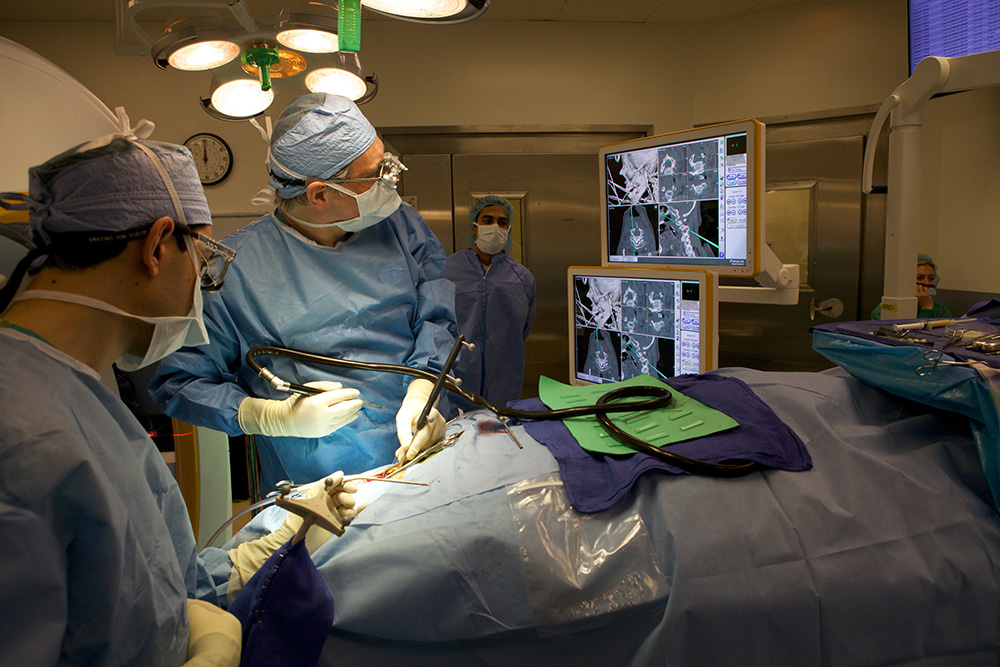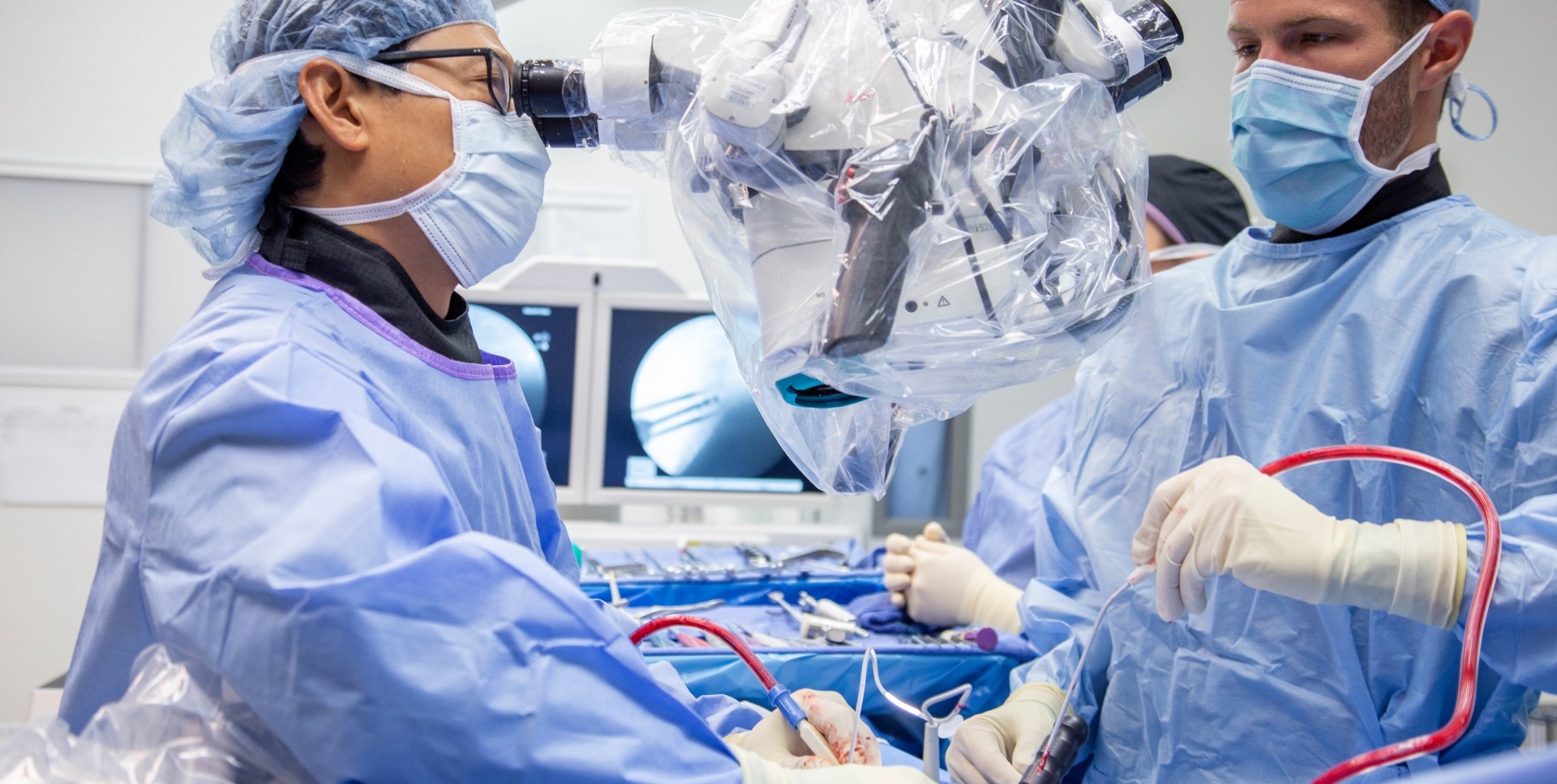What Back Issues Normally Result In Procedure for Alleviation?
Spine problems that warrant surgical treatment usually occur when conventional therapy choices fall short to give sufficient relief from consistent discomfort and practical problems. Conditions such as herniated discs, spine stenosis, and degenerative disc illness regularly bring about surgical treatments focused on recovering and relieving signs mobility. Recognizing the certain signs for surgical treatment and the kinds of interventions readily available is essential for both individuals and medical care suppliers. As we discover the intricacies bordering these spine issues, it ends up being obvious that the choice to seek medical alternatives is multifaceted and warrants careful consideration.

Herniated Discs
Herniated discs are a typical spinal problem that regularly causes surgical intervention when traditional treatments fail. This problem happens when the soft inner gel of a back disc extends through a tear in the harder outer layer, possibly compressing close-by nerves. Symptoms often consist of localized discomfort, emitting discomfort in the arm or legs, and neurological deficits such as prickling or weakness.

Surgical procedure aims to reduce discomfort and recover function by removing the herniated part of the disc or supporting the influenced back segment. While numerous individuals experience substantial improvement following surgical treatment, it is critical to weigh the benefits and dangers in appointment with a certified spine specialist. Eventually, timely treatment is crucial to improve and stop additional issues lifestyle for individuals experiencing this devastating problem.
Spine Stenosis
Experiencing spinal constriction can substantially influence an individual's wheelchair and quality of life. This condition occurs when the spine canal tightens, placing stress on the back cord and nerves. Typically seen in the lumbar (lower back) and cervical (neck) areas, back stenosis commonly results from degenerative adjustments related to aging, such as joint inflammation, disc herniation, or thickening of tendons.
Signs of back stenosis can vary, however they normally include discomfort, pins and needles, tingling, and weak point in the extremities. These signs may worsen with task or extended standing and commonly enhance with rest. In extreme situations, people might experience difficulties with equilibrium and sychronisation, resulting in an enhanced danger of falls.
When traditional treatments, such as physical therapy, medications, and way of living adjustments, fail to relieve signs, surgical treatment may be taken into consideration. Procedures like laminectomy or back combination purpose to unwind the damaged nerves and support the back. Early diagnosis and therapy are vital in managing spine stenosis successfully and preserving wheelchair, inevitably improving the person's general quality of life.
Spondylolisthesis
Spondylolisthesis happens when one vertebra slides forward over the one below it, possibly leading to spine instability and nerve compression. This problem can arise from different variables, including hereditary issues, degenerative changes, injury, or recurring stress injuries. Signs usually include lower pain in the back, stiffness, and radiating pain in the legs, which can dramatically impact daily activities and total top quality of life.
Diagnosis usually includes a comprehensive scientific analysis, imaging researches such as X-rays or MRI, and assessment of neurological function. The degree of slippage is categorized right into qualities, with greater grades showing more serious variation and a greater chance of surgical treatment.

Very early medical diagnosis and ideal monitoring are vital in preventing more issues and enhancing person results. As spondylolisthesis can result in chronic discomfort and special needs, timely treatment is vital for restoring back health and wellness.
Degenerative Disc Disease
Degenerative Disc Condition (DDD) is a problem characterized by the steady degeneration of the intervertebral discs, which act as critical shock absorbers in between the vertebrae of the spine. As these discs shed hydration and elasticity with time, they end up being much less efficient at supporting the vertebrae, bring about enhanced rubbing and stress and anxiety on the spinal frameworks.
Clients with DDD often experience signs such as chronic back discomfort, stiffness, and decreased mobility (best spine surgeons in st louis mo). The condition can additionally cause nerve compression if the degenerated discs lump or herniate, resulting in radicular discomfort, weakness, or tingling in the arm or legs
Treatment choices variety from traditional measures, including physical treatment and discomfort management, to more intrusive treatments when conservative procedures fall short. Surgical treatments, such as back blend or artificial disc replacement, may be suggested for people with substantial discomfort and functional problems.
Spinal Lumps
Spinal lumps, which can be benign or malignant, represent another considerable reason for spinal conditions that might require surgical treatment (best spine surgeons in st louis mo). These lumps can stem within the spinal column (primary lumps) or spread from other parts of the body (second lumps) Their visibility can bring about different signs, go to my site including localized pain, neurological deficiencies, and alterations in mobility
Surgical treatment for spinal lumps usually intends to alleviate symptoms by eliminating the lump, maintaining the back, and dealing with any kind of compressive results on the spine cord or nerves. Indications for surgical treatment normally consist of considerable discomfort not responsive to conventional therapies, or neurological impairment arising from the lump's growth.

It is critical for clients providing with signs and symptoms suggestive of spine growths to undertake thorough diagnostic assessments, including imaging researches and biopsies, to establish the appropriate course of action (best spine surgeons in st louis mo). Early detection and treatment can significantly improve client results and lifestyle
Verdict
In recap, numerous back issues, including herniated discs, spinal stenosis, spondylolisthesis, degenerative disc illness, and spine growths, commonly demand medical treatment when traditional therapies fall short to offer alleviation. These problems cause considerable discomfort and practical disability, triggering the factor to consider of procedures such as discectomy, spinal fusion, and laminectomy. Inevitably, medical choices objective to minimize discomfort, enhance flexibility, and recover lifestyle for individuals affected by these incapacitating spinal problems.
Problems such as herniated discs, spinal constriction, and degenerative disc condition often lead to surgical treatments intended at recovering and easing signs mobility.Herniated discs are an usual spine condition that regularly leads to surgical treatment when traditional treatments fall short. Surgical treatments, such as spinal blend or about his synthetic disc replacement, might be indicated for people with considerable discomfort and practical impairment.Spine tumors, which can be malignant look at this web-site or benign, stand for one more substantial cause of spinal problems that may demand surgical treatment.In summary, different spine problems, consisting of herniated discs, spine constriction, spondylolisthesis, degenerative disc disease, and back growths, often require surgical intervention when traditional treatments fall short to offer alleviation.
Comments on “Understanding the Expenses Involved with the Best Spine Surgeons in St Louis MO”